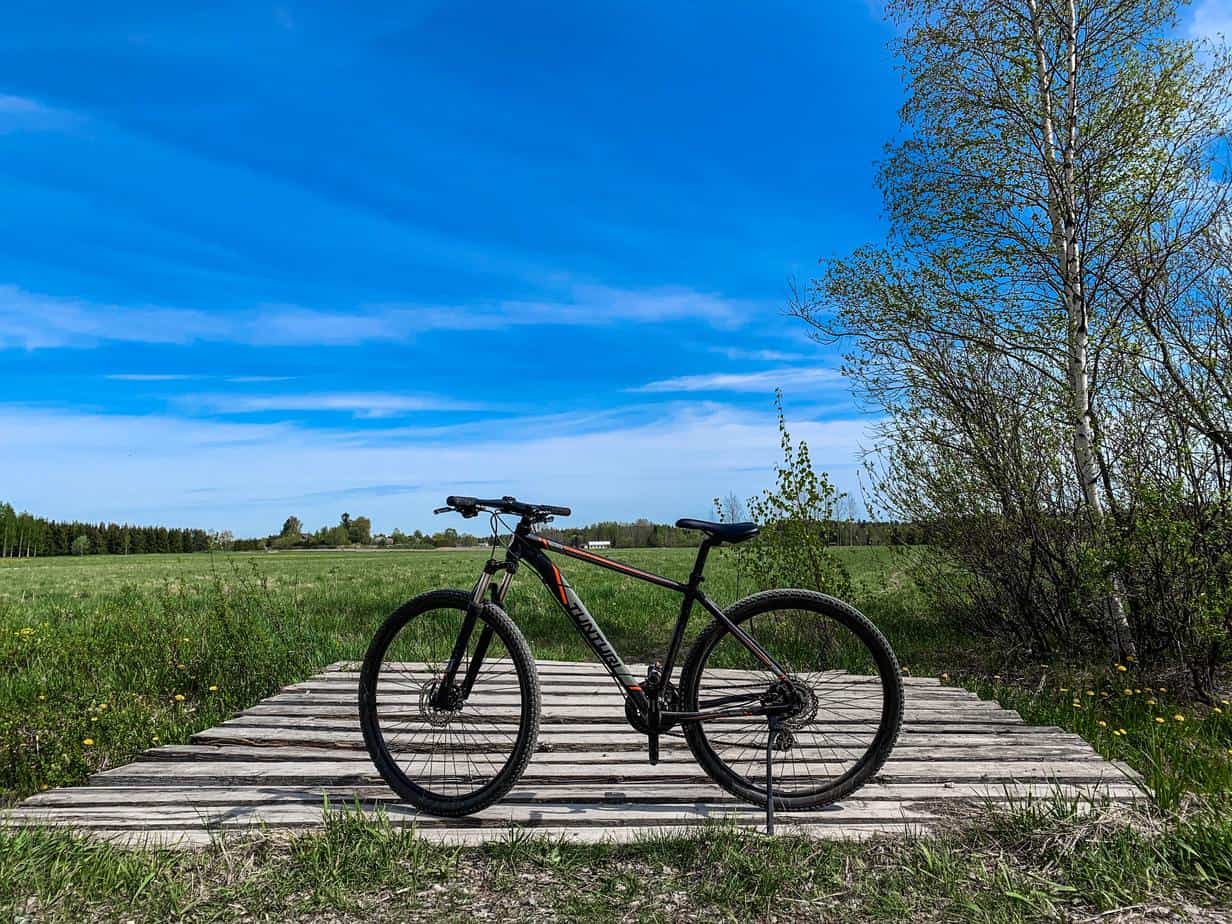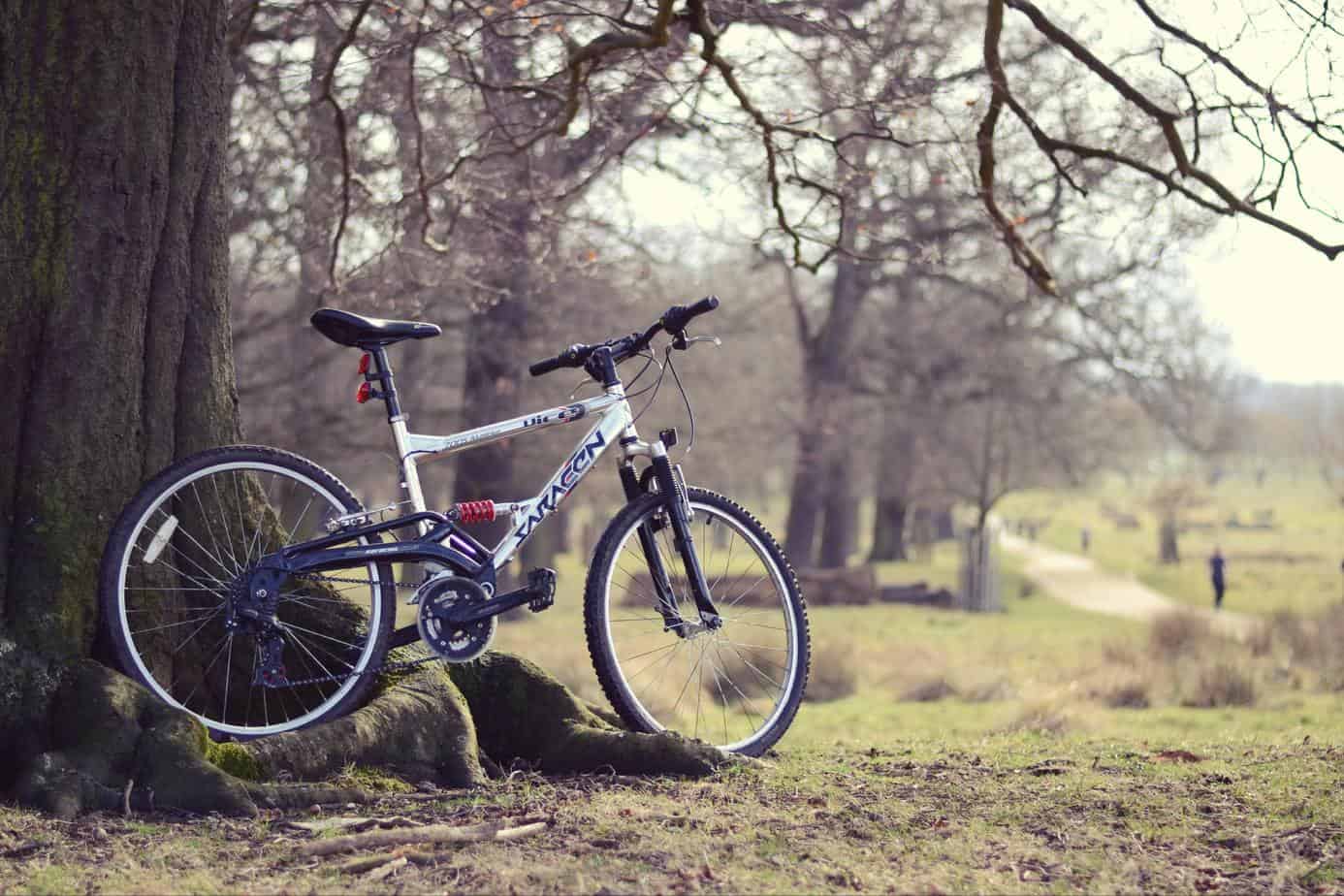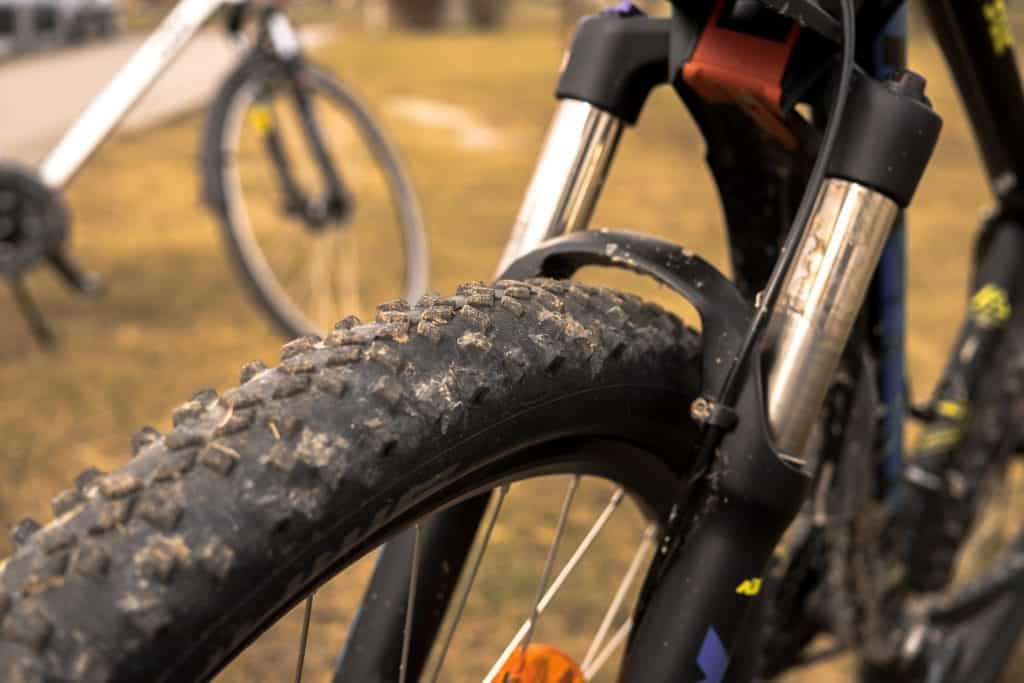How To Measure the Wheel Size of a Bike?
/ Beginners • Tips / How To Measure the Wheel Size of a Bike?
So, are you looking to purchase a replacement or a spare tire for your mountain bike? But you don’t know how to measure the wheel size of a bike?
In this guide, we will list some details associated with how to measure the wheel size of a bike.
And the best part is that you can use these techniques to measure the wheel size of any bike. Wheel size measurement is a part of standard bike maintenance, and you can either do it by determining the size of the rim or the tire. So, carry on reading on how to measure the wheel size of a bike.

Check Those Tire Markings
Before knowing how to measure the wheel size of a bike you need to understand that most bikes have their tires marked with the wheel size on the sidewall of their tires. You can also check your bike manual as it will have the wheel size of your bike in its specifications.
You can get in touch with your bike shop, and they will tell you about your bike’s tire size. Another way to find these numbers is to check the retailer’s website. The wheel size of your bike will be mentioned in the specification section of your bike.
There are different sized wheels; the smaller group features 16-inch (ISO 305mm) wheels, 20-inch (ISO 406mm) wheels, and 24-inch (ISO 507mm) wheels.
And then there are full-sized standard wheels like 26-inch (ISO 559mm) wheels, 27-inch (ISO 630mm), 27.5-inch (ISO 584mm) wheels, and 29-inch (ISO 622mm) wheels. Furthermore, oversized wheels are available on the market, including 32-inch (ISO 686mm) wheels and 36-inch (ISO 787mm) wheels.
These numbers are provided here to give you an overview. In the following text, we will highlight some techniques to determine the diameter and width of your tires.
Now, let’s talk about how to measure bike wheel size.
Measuring the Tire with Standard Technique
Standing the bike upright
So, how do you measure bike wheel size? The standard technique is the most popular one for measuring the tire size of a bike. Stand your mountain bike upright with a kickstand or by leaning it against a wall.
You can measure the bike wheel when your bike is upright, and it won’t tip onto you. You can use retractable metal tape to measure your bike instead of plastic tape. If you have someone else with you to help, then you can use a plastic measuring tape.
Measure the distance from the center to the ground
You need to begin by measuring the distance from your wheel’s center towards the ground beneath the tires. Make sure you keep the measuring units similar by using only inches throughout the measurement process. So, you don’t have to do any conversions and waste your time.
The measurement that you will determine here will be the wheel’s radius, which is also half of its diameter. You can get to diameter by multiplying the radius by 2.
Excluding those BMX models, most adult mountain bike wheels range in diameter between 26 inches to 29 inches. If you have your tires mounted, you can use your tire’s sidewall to find its measurement.

Measure the flat part of the tire across
It’s time to measure the flat part of the tire across. It means that you will do the measurement of the tread from one side to the other. The distance here is the tire’s width that can vary based on the use of the tire on different terrains.
For instance, the tread will be thicker on a mountain bike than a road bike because it has to deal with uneven terrain. The thicker and wider tread will allow better grips on uneven terrain and maintain a better grip. In addition, narrower treads are better suited for faster and smoother rides.
Put your tire’s diameter first and then its width
Measurements and dimensions of a tire have its diameter first and width second traditionally. For instance, if a tire has its size mentioned as 29 x 2.25, that tire is 26 inches while its tread width or thickness across is 2.25 inches.
This is the traditional way of measuring the size of your bike tire, and it’s common with most types of bikes out there. So, there you go now, you won’t have to think, “how do I know my bike wheel size.”
Measuring the Tire with ISO Method
Check to see if your tire is measured with this technique.
There is a second method of measuring wheel size on the bike, and the International Organization for Standardization establishes it. This system has millimeters for signifying the wheel size for the bike.
If you don’t have this measuring tape with metric rules on it, keep in mind that one inch has 25.4 millimeters and find out the width using a calculator by multiplying inches with 25.4.
ISO sizing is one of the most reliable options to measure your bike tires right in the comfort of your home. This is because these numbers will give you the most accurate measurements of your bike tire size.
Most tires are measured with both the ISO and the standard technique. When buying a tire, make sure its size is printed on its sidewall. So, you can pick the right one based on your needs.

Prop the bike upright
So, how to measure MTB wheel size? You can either stand it against the wall or put it on its kickstand. Then, measure the size in millimeters from the wheel’s center to its inner edge. Then, you can multiply this figure by 2 to get the diameter of your tire as it is the radius in millimeters.
In the ISO system range, most adult bike tires range from 650 mm to 700 mm. This measuring technique includes both the BSD or bead seat diameter along the width of the tire in its final millimeters.
For example, a 700x35c tire has a 622 m bead seat diameter, and its width is 35 mm across. Therefore, its ISO designated number will be 35-622. At the same time, a 26 x 2.00-inch tire will come with a 559 mm bead seat diameter. And its ISO designated number will be 50-559.
Measure the width in millimeters
You can use the same process we have listed above to measure the tire size from one side to another across the tread. You need to keep in mind that tires of different widths can be used on a similar bike wheel if there is a minor difference.
Mention the width first and then the diameter
As opposed to the traditional technique, ISO methods mention the width of your tire first and then its diameter. Therefore, you need to have a look at the numbers first. After that, check to see whether the tire size is given in ISO or standard way.
Wheel size 39 x 700 and 39mm wide with a diameter of 700 mm from its outer edge. Its bead seat diameter will be 622 mm. If the bike tire is sized 29 x 2.25 inches, its diameter is 29 inches. In comparison, its tread width is 2.25 inches in the standard technique.

How to Calculate your Bike Wheel’s Circumference
Measuring the circumference
The circumference is the distance from one point around the circle to the same point on the outside of your bike’s wheel. This is the number to properly calibrate your bike’s odometer, speedometer, and GPS.
Just like your motorbike or car’s odometer and speedometer, if you change the size of the heels, the gauges will show inaccurate numbers. Therefore, you will have to set your bike equipment based on the size of your bike wheel as well.
Whether you are looking to calibrate your bike’s cyclometer or have purchased a new one, you will have to determine your bike wheel’s circumference to calibrate the gauge properly.
Calculating the circumference using pi
The circumference of any circle can be found out quickly if you know its diameter, which is the distance on a circle from one side to the other on the opposite end. We all know pi equals 3.14.
Now, if your tire’s diameter is 26 inches, you can multiply it with pi (3.14 x 26), and it will provide you with the circumference of your tire, which will be 81.64 inches in this case.
If you know the width and diameter of your tire, then you can look up the circumference on an online wheel-size bike chart.
Measuring circumference using a string
Another technique of determining the circumference of your bike’s wheel is using a string. If you don’t know the diameter of your wheel, you need to evenly wrap a string right around the outer edge of your bike tire.
You can cut or mark the string where it reaches its starting point. Now measure the length of this string and determine the circumference of your bike wheel.
Using a wet dot to measures the circumference of your bike wheel
You can mark a spot on the tread of your tire using wet paint. Now carefully push your bike in a straight line for at least a couple of rotations.
You are doing so to make sure that the wet paint spot marks the ground underneath twice. Now measure the distance between the first spot and the second spot, and you will have the circumference of your tire.
Conclusion
How to measure the wheel size of a bike is not a difficult task at all. You can get those numbers in your bike’s owner’s manual or on the manufacturer’s or retailer’s website under the specification section.
If you can’t find your wheel size there or don’t have access to your bike’s owner’s manual, you can measure it on your own using various techniques.
You need to go for the right wheel size based on the size of your bike for the best performance. In addition, it is important if you are looking to calibrate your bike for its GPS, odometer, and speedometer.
Related Articles
What Are Mountain Bike Rock Gardens?
Oli L • September 5, 2022
So you're getting into mountain biking and not sure what mountain bike rock gardens are. Riding rock gardens on a mountain bike is a skill to learn when you first start riding. You might have thought that most trails will be smooth and easy to navigate through but remember that each trail is different. Preparing for these obstacles will help you become a better mountain biker. Rock gardens can come...
The Full Suspension Vs. Hardtail Debate Continues
Oli L • August 28, 2022
The full suspension vs. hardtail debate continues as we look at the pros and cons of each type of bike. Both full suspension and hardtail mountain bikes are great options if you want to start mountain biking. But what do you really need to know about each type before buying one? Mountain biking has exploded in popularity in recent years. The sport involves riding through singletracks mostly in beautiful mother...
6 Mountain Bike Maintenance Tips For Beginners
Oli L • August 8, 2022
There are many different types of mountain bikes out there. But, they all have one thing in common – ongoing maintenance. Mountain bike maintenance can be tricky if you don’t know what you’re doing, you could end up damaging your bike or even yourself. Mountain bikes require proper maintenance to keep everything running smoothly. In this article, we'll show you what to do when things go wrong as a beginner...
8 Steps To Becoming A Better Mountain Biker
Oli L • June 13, 2022
Mountain biking is an activity that requires skill, strength, endurance, and balance. It’s also a great way to stay fit and enjoy the outdoors. But before you hit the trails, there are a few things you need to know to become a better mountain biker. The activity requires both strength and skill. It’s also a sport that has become increasingly popular in recent years. To improve your riding skills, you...
5 Mountain Bike Racing Tips for Beginners
Oli L • June 10, 2022
Mountain bikes are becoming increasingly popular in recent years. They offer an exciting way to explore the outdoors. It also offers many physical and mental health benefits on top of the friendly competition that many enjoy. We're going to go over 5 mountain bike racing tips for beginners to help you get going. MTB racing is an exciting sport that combines speed, agility, and strength in a way that few...
Latest Articles
Popular Articles
Product Of The Week
Monday 22nd April
